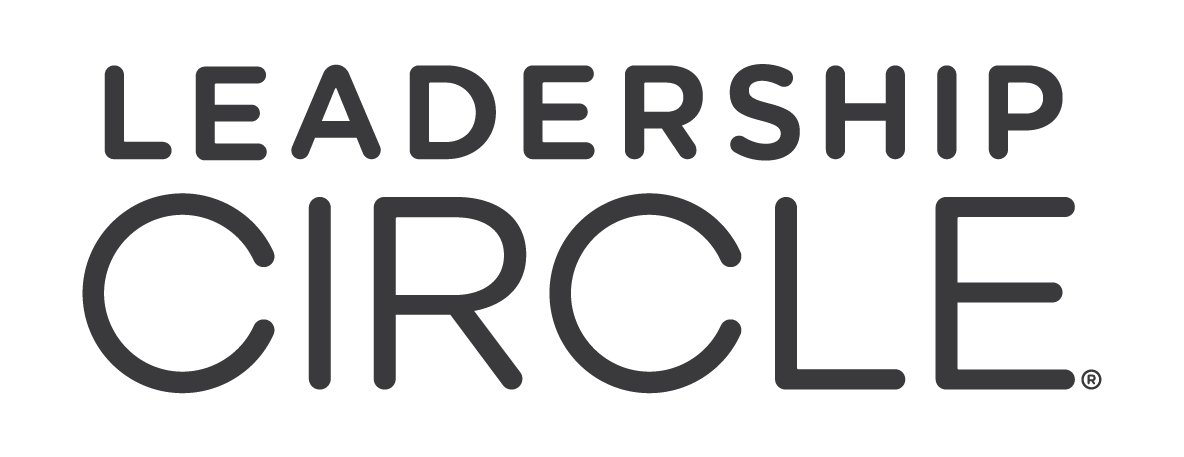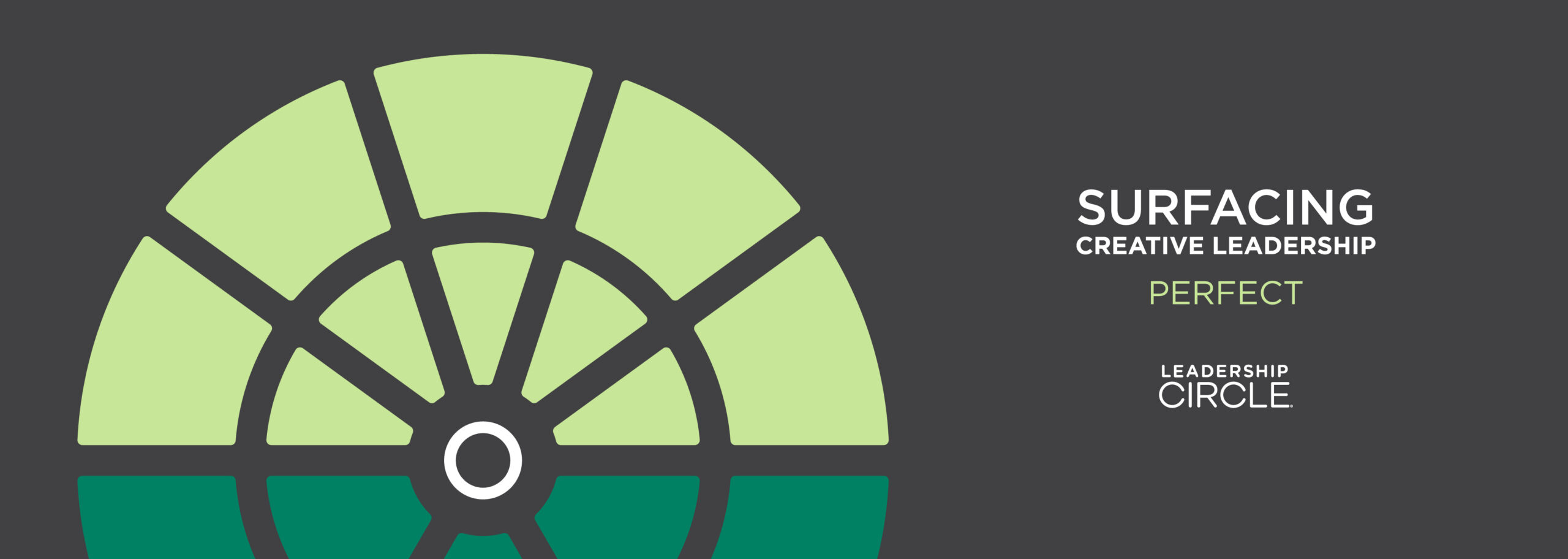We’re diving deep into the dimensions of the Leadership Circle Profile—one at a time—to surface insights, get curious, and explore how each dimension helps leaders move from Reactive to Creative leadership. In this post, we’re unpacking Perfect—the relentless pursuit of excellence that can propel leaders forward or trap them in overdrive.
We’ve all been there. The late-night email draft rewritten five times. The team presentation where you can’t stop tweaking slides until every pixel lines up. The meeting where you replay your words afterward, wondering if you should have said them differently.
That’s Perfect in action.
At its best, Perfect pushes us toward high standards, sharp focus, and polished results. The trouble is, leadership effectiveness has almost no correlation with perfectionism. You can exhaust yourself chasing flawless execution, and still not move the needle on what matters most.
So, what’s going on here? Why does the drive for perfection feel so powerful—and yet deliver so little in terms of leadership impact? Why do we keep chasing perfection if it rarely pays off?
What Do We Mean by Perfect?
When we talk about Perfect in the Leadership Circle Profile, we’re talking about the drive to deliver flawless results and operate at the highest possible standard, often at every moment of every day. For many leaders, this looks like being laser-focused, polished, and determined to succeed beyond expectation, no matter the cost.
Leaders who score high here are often admired for their dedication and discipline. They set ambitious goals, sweat the details, and hold themselves—and others—to uncompromising standards. At its best, that drive fuels excellence. But taken too far, it comes at a terrible cost: stress, strained relationships, and a tendency to equate worth with achievement. When every misstep feels like failure, leaders can get caught up in proving themselves above all else, justifying decisions instead of taking risks, experimenting, and learning from what works and what doesn’t.
Leaders who score low on Perfect, on the other hand, tend to be free of this trap. Their sense of self-worth isn’t tied to flawless execution, and they can pursue excellence without being consumed by it. Low scores don’t mean low standards—they simply point to a leader whose energy is available for other things.
The data backs this up. With a correlation of just .05, Perfect has virtually no relationship to overall leadership effectiveness. In other words, working harder to get everything “just right” doesn’t make you a better leader. It may power short-term performance, but it rarely translates into long-term impact.
Why This Dimension Matters
Perfectionism doesn’t just drain leaders—it drains everyone. Teams feel the weight of impossible standards, organizations get caught in cycles of overwork and rework, and communities lose the creative spark that comes from taking risks and learning from mistakes. When worth is tied to flawless execution, connection gets squeezed out, and the focus shifts from making meaningful progress to simply avoiding mistakes.
Think of Perfect as rocket fuel. In the right dose, it gives leaders lift-off, an extra push toward performance and excellence that moves important work forward. But too much fuel overheats the engine. The same force that launches big outcomes can also burn out leaders and teams, leaving them exhausted and discouraged.
In their recent conversation about this dimension, Leadership Circle Co-Founders Bob Anderson and Bill Adams named the energetic cost of chasing perfection and the difference between constructive and destructive dissatisfaction. Bill put it this way: “When the absence of fulfillment, of being able to see accomplishment in self and others plays itself out, that detracts from all those other areas of engaging others and being engaged.” The result? Leaders lose energy they really can’t afford to lose and organizations stay stuck in neutral.
🎥 Watch the full conversation with Bill and Bob.
That’s the stake. Left unchecked, Perfect can produce leaders who drive results but leave themselves and their teams running on fumes. Held in balance, it powers excellence without stealing the energy needed for connection, creativity, and sustained impact.
What It’s Not: Common Misconceptions
Every great leader cares about quality and results but striving for perfection isn’t the same as having high standards. The tipping point with Perfect is when those standards become tied to self-worth—when your value as a person feels dependent on flawless performance, when being enough hinges on never making a mistake. That’s not excellence; that’s just mindless pressure.
It’s easy to misinterpret what this looks like in practice. A low score on Perfect doesn’t mean laziness or carelessness. Leaders with lower scores simply aren’t trapped in the cycle of tying self-worth to performance. They can still pursue excellence, but without the constant background noise of “never enough.”
Perfect isn’t a secret shortcut to leadership effectiveness, either. Holding yourself and others to impossible standards rarely inspires greater effort. In fact, the harder you chase “perfect,” the less space there is for teamwork, innovation, and genuine connection. Make no mistake: as a perfectionist, you can still be an influential and impactful leader. But the question is, what kind of influence and impact will you have? And how long will that impact last?
From Reactive to Creative: The Role of Perfect
Perfect, when left unchecked, can trap leaders in overdrive—exhausted, stressed, and disconnected from the people and purpose that make their work meaningful. As a Reactive Tendency, Perfect fuels relentless striving, endless reviewing, and the need to control outcomes. It can feel like power. Unfortunately, that power comes at the cost of engagement, collaboration, and creativity.
But there’s hope. Leaders can shift out of Reactive mode by becoming aware of when their high standards are driving stress or disconnection, and by intentionally choosing how and where to apply their energy. This doesn’t mean abandoning excellence—it means leveraging the drive for quality without letting it define your self-worth or dictate your relationships.
It’s a subtle but powerful move. In practical terms, this shift looks like setting realistic expectations, delegating with trust, and focusing on what truly matters—even if that means disappointing others. In conversation with Bill Adams, Bob Anderson shared that his mentor once asked him, “What do you want to do, and who will you need to disappoint in order to do it?”
Oof. What he’s suggesting is that focusing your energy on what matters most often requires making deliberate choices about where not to give it. That’s no small task, especially for someone trying to do everything perfectly. But when successful, the result is a leader who still demands high standards but does so in a way that fuels performance, impact, and innovation. In other words, one who uses their high standards to serve their purpose, not their ego.
🎥 Watch the full conversation with Bill and Bob.
Leveraging Perfect Leadership: Practices + Prompts
Perfect doesn’t have to work against you. When you shift out of Reactive mode, your drive for high standards can become a powerful tool to focus your energy, inspire others, and get meaningful results—without burning yourself or your team out.
If you’re looking to use Perfect to your advantage, try experimenting with practices like these:
- Set realistic expectations for yourself and others, recognizing that perfection isn’t required for meaningful results.
- Delegate with trust, giving people autonomy while providing support when needed.
- Prioritize tasks and initiatives based on impact, not on the impulse to control everything.
- Pause before jumping in to fix or redo work; ask whether your intervention truly adds value.
- Celebrate accomplishments—your own and others’—even when they’re not flawless.
- Use feedback and review cycles to learn and improve, not to punish or self-flagellate.
Prompts for reflection:
- Where am I holding myself or others to standards that may be unnecessarily high?
- What tasks or projects consume my energy without contributing meaningfully to my purpose?
- When have I used high standards to control rather than inspire?
- Who might I need to disappoint in order to focus on what truly matters?
- How can I shift from trying to prove worth through perfection to using my standards to create impact?
Curious how this dimension shows up in leadership and coaching moments? 🎥 In a recent webinar, Leadership Circle coaches Suzanne Kietselaer and Pete Marsh explored how Perfect shapes leaders’ everyday choices—and how leaders can aim for excellence without getting trapped in perfection.
Recommended Reading
Want to explore more about the balance between high standards and effective leadership? These books offer insights and tools for using perfectionism wisely and leading with purpose.
- The Gifts of Imperfection by Brené Brown
A guide to letting go of the need to be flawless and embracing authenticity, resilience, and wholehearted living. - Essentialism: The Disciplined Pursuit of Less by Greg McKeown
A practical framework for focusing on what truly matters, eliminating distractions, and applying your energy with intent. - Drive: The Surprising Truth About What Motivates Us by Daniel H. Pink
Explores how autonomy, mastery, and purpose fuel motivation more effectively than external pressure or perfectionistic control. - Radical Candor by Kim Scott
Offers strategies for setting high expectations while fostering trust, connection, and honest feedback in teams.
Final Thoughts: High Octane, High Stakes
There’s no doubt about it. Perfect can be a powerful boost—it drives focus, quality, and results. But like high-octane fuel, it can overheat quickly if left unchecked. When it pops as a Reactive Tendency, Perfect can exhaust leaders and their teams, leaving little room for creativity, connection, or real growth.
The good news is that your high standards don’t have to work against you. By noticing when you’re over-indexing, choosing where to focus your energy, and being willing to disappoint in service of what truly matters, you can shift out of Reactive mode and channel Perfect constructively.
Leadership isn’t about getting everything right—it’s about using your standards intentionally, in service of purpose, people, and performance. When you do, you unleash the very best of your energy, turning Perfect into a force for meaningful impact.






